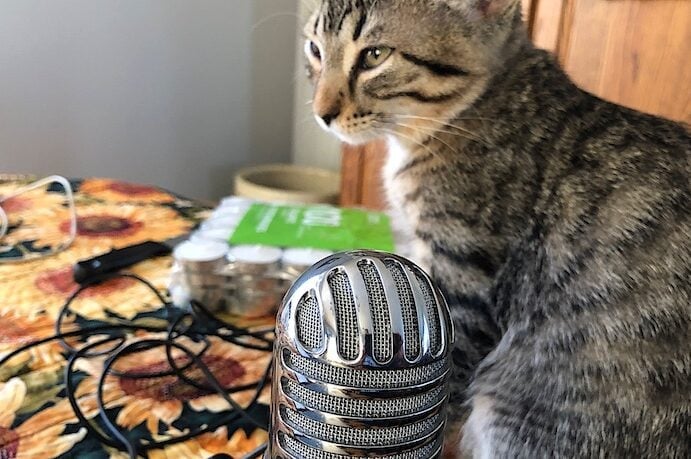If you’ve been keeping up with the latest developments in artificial intelligence, you know that researchers and scientists are making impressive strides in creating a chatbot that can understand sentences and speak like a person. But why stop with humans? Who among us doesn’t want to know what their dog or cat is saying?
Scientists have already been hard at work making AI programs that can “understand” animals. We’re not at the level where we can strap a helmet onto a cat and have it speak in perfect English, the reason being that AI is dependent on what’s called “machine learning”, where it takes in information that humans know to be true and processes it to get a result. So AI does not ‘magically’ know what an animal is saying in a certain situation, but rather applies what humans tell it about how animals “talk”. As such, the AI is limited to what humans know.
But that doesn’t mean it has no value. The benefit of AI is that it can very quickly compare a use-case against thousands of examples in its knowledge base to produce a result. And if you provide that data to someone who knows nothing about how animals communicate, that person can get an answer in mere seconds.
“Treat” Face
Con Slobodchikoff, author of Chasing Doctor Dolittle: Learning the Language of Animals, is currently making an AI that can read a dog’s facial expression and bark and inform the user about what the dog may be thinking. He says that people are too focused on a dog’s loud bark and they completely miss the dog’s body language; something an AI in a phone app could teach dog owners about.
This technology is also useful for keeping tabs on wild animals. For instance, Project CETI is a scientific program to study how to understand wild animals, starting with the sperm whale. If the research is successful, scientists will have a model that can automatically log what a sperm whale is “saying” and relay it back to researchers within moments. Multiply that across hundreds of sperm whales in the ocean and an AI can quickly map out the “neighborhood chatter” of these gigantic beasts with little to no human intervention.
One at a TIme, Please
This technology, however, requires a lot more than placing a few microphones on some animals and calling it a day. For example, if you want to study the call of a specific bird, you’re bound to pick up other noises from different species of birds or even humans calling out to one another. AI can help here, too.
The Earth Species Project released an open-source program in 2021 that can listen to and separate out the different calls. So, not only can AI identify an animal call amongst background noise, but also determine what it’s saying.
We’ve come a long way in such a short time.
learn more
Project Ceti
AI Could Let Us to Animals
How AI Helps Scientists Talk to Animals
https://www.youtube.com/watch?v=NqnBT4-jp54
Earth Species Project
Animal Communication
The Future of Human Animal Communication
https://readfast.in/the-future-of-human-animal-communication-how-technology-is-bridging-the-gap/
Device That Lets Dogs Talk
https://www.natgeokids.com/uk/discover/animals/general-animals/scientists-device-dogs-talk/
Revolutionizing Animal Communication
AI Google Translate for Animal Speech
https://www.youtube.com/watch?v=1qLZvmYRyo0
CHAT Dolphin Interface
https://www.wilddolphinproject.org/our-research/chat-research/
Will We Soon Be Talking with Dolphins and Whales?
https://www.nathab.com/blog/will-we-soon-be-talking-with-dolphins-and-whales/
Talking Animal
https://en.wikipedia.org/wiki/Talking_animal
What is your dog trying to tell you?
AI Talks to Whales
https://www.wired.com/story/use-ai-talk-to-whales-save-life-on-earth/

